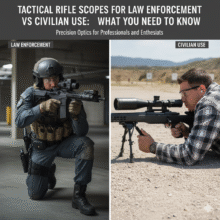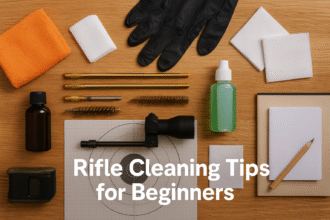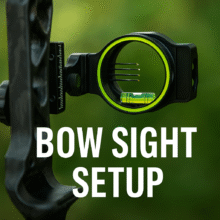Mastering the Art of Low Light Shooting: Tips for Shooting in Low Light Conditions

Introduction
Low light shooting can be both challenging and exciting, whether you’re a seasoned marksman or a beginner. Navigating the unique conditions of reduced visibility requires specific gear and techniques to ensure accurate and safe shooting. In this comprehensive guide, we’ll explore essential tips and strategies for shooting in low light conditions, so you’ll be well-equipped for your next twilight or nighttime shooting adventure. Let’s dive in!
Essential Gear and Expert Strategies for Success
Importance of Proper Lighting Equipment
One of the key factors in low light shooting is having the right lighting equipment. This can include a high-quality weapon-mounted light or a handheld flashlight. When selecting a flashlight, consider factors such as brightness, beam distance, and runtime. Ensure the light is designed for tactical use, as this will make it more durable and reliable under challenging conditions. Remember, having a backup light source is always a good idea in case your primary light fails.
Choosing Night Sights or Optics
When shooting in low light conditions, traditional iron sights may not be effective. Instead, consider upgrading to night sights or low light-compatible optics. Night sights use tritium or fiber optics to provide illumination, making it easier to acquire your target in low light. Alternatively, low light optics, such as red dot sights or scopes with illuminated reticles, can significantly enhance your target acquisition and accuracy in dim conditions.
Understanding Light and Shadow
Shooting in low light conditions requires an understanding of how light and shadow affect your environment. When positioning yourself, consider how your light source will create shadows and potentially reveal your location to others. Additionally, be mindful of the potential for glare or reflection from your light source, which could affect your ability to see your target. Learning to use light and shadow to your advantage will improve your low light shooting abilities.
Developing Effective Low Light Shooting Techniques
In addition to the right gear, effective low light shooting techniques are essential for success. Practice shooting with both your dominant and non-dominant hand, as you may need to hold a flashlight in one hand while shooting with the other. Develop a stable shooting stance, and practice shooting from different positions and angles. Dry-fire practice can be especially helpful for honing your low light shooting skills without the need for live ammunition.
Importance of Proper Training
Proper training is crucial for safe and effective low light shooting. Enroll in a low light shooting course or work with an experienced instructor to learn the necessary techniques and safety measures. Additionally, regular practice at the range or in a controlled environment is essential for maintaining and improving your skills. Make sure to practice shooting in different low light scenarios to build your confidence and proficiency.
Safety Considerations for Low Light Shooting
Safety is of paramount importance when shooting in low light conditions. Always be aware of your target and what lies beyond it, as visibility may be limited. Ensure your firearm is in good working condition, and that you’re using the correct ammunition. Additionally, be mindful of your surroundings and the potential hazards that may be present in low light situations, such as tripping hazards or obstacles.
Adapting to Different Low Light Environments
Shooting in various low light environments, such as urban settings, wooded areas, or indoor ranges, can present unique challenges. Adapt your gear, techniques, and strategies to the specific environment you’ll be shooting in. For example, in urban settings, you may need to consider factors such as artificial lighting, noise, and movement. In wooded areas, be mindful of the potential for wildlife encounters or navigating uneven terrain.
Conclusion
Shooting in low light conditions can be an exhilarating and rewarding experience when you’re properly prepared. By investing in the right gear, developing effective shooting techniques, and obtaining proper training, you’ll be well-equipped to tackle a variety of low light shooting scenarios. Remember, practice is key – the more time you spend honing your skills and adapting to different environments, the more proficient you’ll become in the art of low light shooting. So, gear up, train hard, and enjoy the thrill of mastering the art of shooting in low light conditions!







